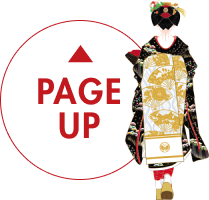TOPICS
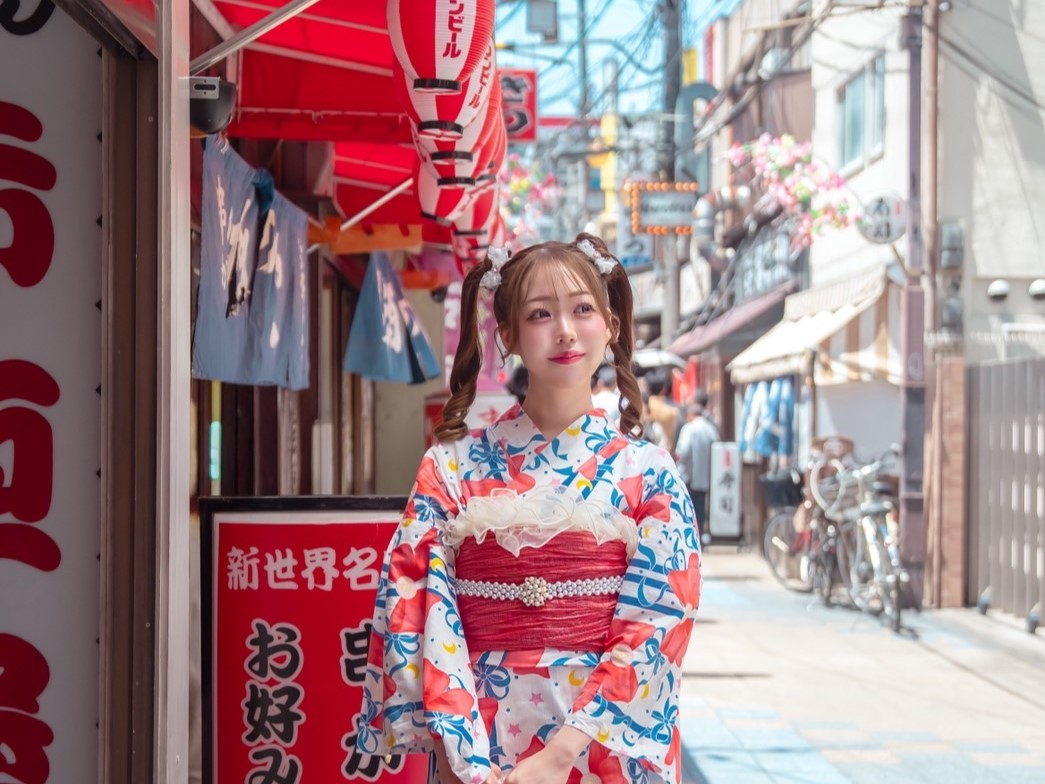
What Your Kimono Color Says About You
A Personality Guide for Choosing the Perfect Look in Osaka
You walk into the kimono shop.
There are over a hundred colors, styles, and patterns—florals, lace, traditional, modern, deep navy, soft pastels, bold reds, golden embroidery. You freeze. It’s beautiful, but overwhelming.
“How do I choose?”
The good news is: there’s no wrong answer.
The better news is: your personality might already know what suits you best.
At Kawaii Osaka, one of the city’s top kimono rental shops, the team helps you find a kimono that not only fits—but feels right. Because choosing a kimono isn’t just about how you look in it. It’s about how it reflects who you are.
Let’s explore what your ideal kimono color might be… based on you.
Red: Passionate, Energetic, and Unforgettable
If you’re the kind of traveler who walks fast, laughs loud, and jumps into local food without hesitation—red might be your color.
Red kimono are bold. They stand out in crowds. They say, “I’m here, and I’m living this moment.” Traditionally associated with celebration and vitality, red is a color of strong life force in Japanese culture.
Choose red if you:
Love being the center of the photo
Have a playful or extroverted side
Want to feel empowered and dynamic in your look
Great backdrops:
The neon glow of Dotonbori, the lively streets of Shinsaibashi, or a rooftop café at sunset.
Pattern tip:
Look for bold floral prints like camellia or peony—symbols of strength and confidence.
Blue or Navy: Calm, Thoughtful, and Introspective
Are you a quiet observer? Someone who prefers hidden alleys over big crowds? Do you journal after each travel day and watch the city from a distance?
Then a navy or cool-toned kimono might be your best match.
In Japan, indigo blue (called ai) is deeply traditional and associated with elegance, depth, and wisdom. A navy kimono brings a sense of calm to your entire presence.
Choose blue if you:
Prefer peaceful experiences to noisy ones
Enjoy slow travel and quiet beauty
Like styles that feel timeless and minimal
Great backdrops:
The serene paths of Osaka Castle Park, or the narrow lanes of Hozenji Yokocho lit by lanterns.
Pattern tip:
Try subtle motifs like cranes (symbolizing longevity) or bamboo leaves (resilience and grace).
Pink or Peach: Romantic, Gentle, and Kind
Do you daydream while walking? Do you smile easily at strangers and love taking photos of flowers and architecture? Are you always drawn to soft light and warm feelings?
Then consider a pink-toned kimono, especially in shades like peach, blush, or sakura.
Pink in kimono represents youth, beauty, and emotional warmth. It’s flattering on most skin tones and gives off a gentle, sweet energy.
Choose pink if you:
Want your kimono photos to feel romantic or nostalgic
Tend to look for beauty in small, quiet things
Enjoy soft, feminine styles
Great backdrops:
Spring gardens, traditional bridges, or even the window seat of a teahouse.
Pattern tip:
Sakura blossoms (cherry trees) represent new beginnings. They’re perfect for first-time kimono wearers.
Black or Dark Tones: Chic, Mature, and Confident
Not into cute or colorful? No problem. A black, charcoal, or deep burgundy kimono can be just as striking—and far more dramatic.
Black kimono traditionally symbolize formality, elegance, and mystery. When styled with the right accessories, they offer a fashion-forward look that feels both powerful and modern.
Choose black if you:
Prefer minimalism and clean lines
Feel more yourself in neutral palettes
Want a sharp, polished, editorial look
Great backdrops:
Urban scenes, modern architecture, or nighttime illuminations along Midosuji Avenue.
Pattern tip:
Look for gold accents, geometric patterns, or plum blossoms—symbols of quiet strength and seasonal change.
White or Cream: Pure, Light, and Free-Spirited
If you like wandering without a map, chatting with locals, or sitting under a tree with a book, a white or cream kimono might call your name.
These lighter tones represent openness, travel, and a fresh spirit. They pair well with any background and give off a sense of clarity and freedom.
Choose white if you:
See travel as a way to reset and recharge
Want soft, airy photos
Love subtle beauty and quiet strength
Great backdrops:
Riverside paths, temples in the morning light, or minimalist cafés with wooden interiors.
Pattern tip:
Wisteria or wind motifs match well with a wanderer’s spirit.
Bonus: Multicolor or Patterned Kimono – The Creative Soul
Do you love mixing styles? Is your camera roll full of textures, street art, and spontaneous moments? Then don’t pick just one color—go for patterns.
Multicolored kimono reflect curiosity, movement, and an artistic view of the world. At Kawaii Osaka, there are plenty of options that combine modern flair with traditional base design.
Choose patterns if you:
Love trying new things
Want your photos to feel dynamic and playful
Like to express your individuality
Great backdrops:
Amerikamura, art galleries, or anywhere full of life and energy.
Pattern tip:
Look for mix-and-match obi belts or funky hair accessories to complete the look.
How to Find “Your” Kimono at Kawaii Osaka
Even if you have no idea what color suits you, don’t worry.
The staff at Kawaii Osaka will guide you through the process. Just tell them how you want to feel:
Elegant?
Fun?
Peaceful?
Bold?
From there, they’ll offer color suggestions, pattern combinations, and accessories that bring out the best in you.
They’re not just stylists—they’re storytellers. Helping you write your own chapter in the heart of Osaka.
Final Words: Choose with Your Heart
There are no rules. You don’t need to “look Japanese” or know kimono history to enjoy this experience.
What matters is how the kimono makes you feel. And often, the color you’re drawn to says more than you realize.
So next time you’re in Osaka and standing in front of rows of beautiful kimono, take a breath.
Think about how you want to experience the day.
Then choose the one that makes your heart say, Yes. This is me.
Because in that moment, it’s not just clothing.
It’s expression. Celebration. A little piece of you, wrapped in beauty.
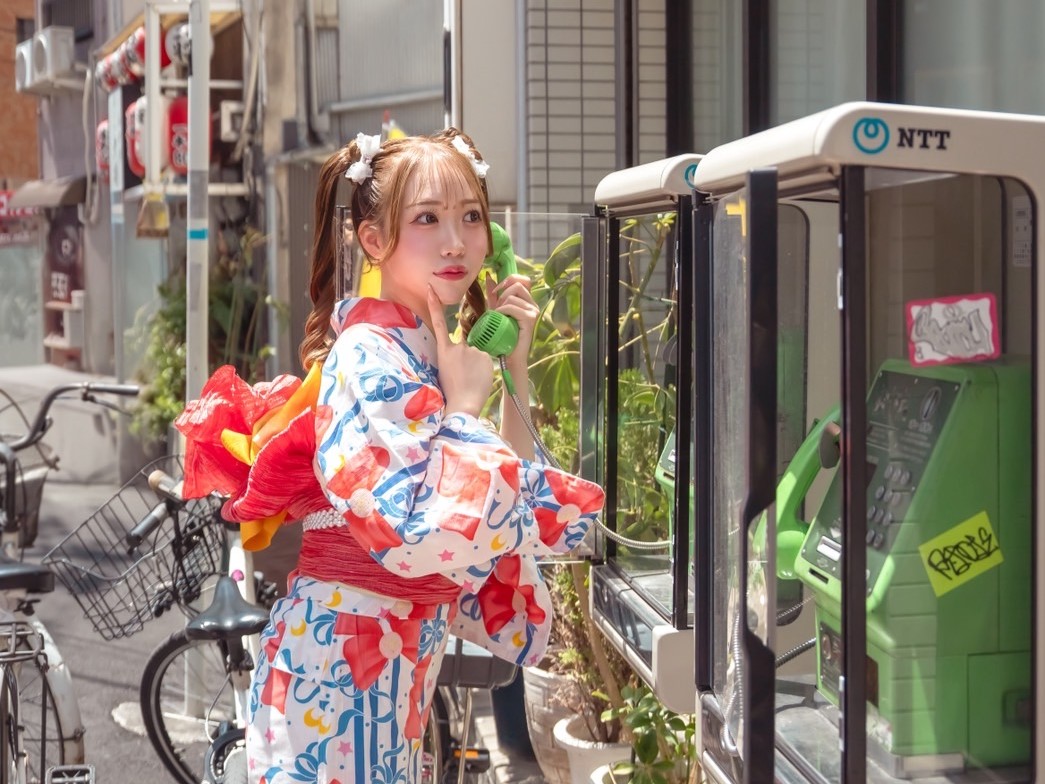
From Dressing Room to Street: What It’s Really Like to Rent a Kimono in Osaka
A First-Time Traveler’s Honest Guide
If you’ve ever thought about renting a kimono in Japan, you’ve probably imagined the end result—the photo by a river, the flowing sleeves, the admiring glances.
But what about everything that comes before that?
How do you actually rent a kimono?
What happens at the shop?
Do you need to speak Japanese?
Will it be awkward?
This is your behind-the-scenes look at what it’s really like to rent a kimono in Osaka—from the moment you book to the moment you step out onto the street.
Spoiler: It’s easier, smoother, and more joyful than you might think.
Step 1: Booking Your Appointment (It’s Simple)
You can book your kimono experience at Kawaii Osaka online in advance. Their website is available in multiple languages, and the process is easy to follow. Choose your rental plan (1-day, 90-minute, furisode, yukata, etc.), pick your preferred time, and enter your basic info.
Don’t worry if you’re unsure about sizes or styles—that’s all decided after you arrive.
If you’re the spontaneous type, walk-ins are also welcome (subject to availability), but booking ahead is always safer, especially during weekends or holidays.
Step 2: Arriving at the Shop (Warm Welcome, No Pressure)
The shop is located in Sōemonchō, just a few minutes' walk from Namba Station or Nipponbashi Station. Even if it’s your first day in Osaka, it’s easy to find.
When you walk in, the atmosphere is calm, clean, and stylish. Staff members greet you with a smile—many speak English or other languages, and even if they don’t, gestures and simple phrases go a long way.
The process begins with storing your personal belongings. You’ll be given a small bag for essentials (like your phone), and the rest goes into a secure locker.
Already, you can feel yourself letting go of the outside world.
Step 3: Choosing Your Kimono (The Fun Part)
Now comes the exciting part: choosing your look.
The staff will show you a wide range of kimono or yukata options based on the season, your rental plan, and your preferences. Whether you want something soft and romantic, bold and colorful, or vintage and classy—they’ll help guide you.
And no, you don’t need to know what you’re doing. They’re there to assist.
Once you’ve chosen your kimono, you’ll also pick an obi belt, a matching bag, and accessories. If you’re getting a hair styling plan, they’ll show you options for hairpins, floral clips, and more.
At this point, many guests say:
“I didn’t know there were so many styles!”
“I thought I’d feel overwhelmed, but it’s actually really fun.”
And it is.
Step 4: The Dressing Process (Professional and Gentle)
After your selection, you're led upstairs to the dressing area. This is a private, quiet space where a trained stylist will help you step into the full kimono look.
They’ll layer everything properly:
Inner garment
Kimono or yukata
Obi (tied beautifully)
Underskirt if needed
Haori or scarf if it’s cold
You don’t need to bring anything with you—they provide all the necessary pieces, including socks and traditional sandals.
The experience is intimate and respectful. The staff explain what they’re doing, make sure you’re comfortable, and work quickly and gently. It usually takes around 15–20 minutes.
Most people look in the mirror afterward and can’t help but smile.
Step 5: Hair & Makeup (Optional, But Recommended)
If you’ve booked a styling option, next comes hair and makeup.
The hairstylist will suggest options that match your face shape, outfit, and the season. Updos, soft curls, braided buns—whatever suits you best. They’ll add delicate accessories like flower pins or pearls.
The makeup is light and natural, but enough to give you a polished glow that photographs beautifully.
Even if you’re not used to dressing up, you’ll feel like your best self—refined, radiant, and somehow calmer.
Step 6: Stepping Out (The Moment It All Comes Together)
Now comes the real moment of transformation: stepping out into the street in your kimono.
Everything feels different.
You walk a little slower. You stand a little taller.
People look your way—smiling, admiring, curious. You hear “Kawaii!” and “So beautiful!” from passersby.
Suddenly, Osaka isn’t just a city you’re visiting. It’s a stage, and you’re part of it.
Optional Add-On: Photography
Kawaii Osaka offers optional professional photography sessions, either in-studio or on-location.
This is highly recommended for couples, solo travelers who want memorable portraits, or anyone celebrating a special trip. You don’t need to pose like a model—the photographer will guide you naturally.
And the final images? Timeless, graceful, and worth printing.
Step 7: Enjoying Your Day (Explore at Your Pace)
With your kimono or yukata on, you’re free to explore the city. Some suggested routes include:
Dotonbori: For bold, energetic street shots
Osaka Castle Park: For traditional gardens and nature
Shinsaibashi: For café hopping and shopping
Hozenji Yokocho: For quiet, lantern-lit elegance
Return time is by 9:00 PM, so you can enjoy both day and night scenery. Many guests enjoy wearing their kimono for dinner or night walks—it feels even more special when the city lights come on.
Step 8: Returning Your Kimono (Simple and Smooth)
When you return to the shop, the staff help you out of the outfit carefully and respectfully. It’s a smooth process, and they handle all the cleaning—so no stress.
In some plans, you’ll even receive a free gift—a yukata or haori to take home as a souvenir. It’s a small but meaningful touch that extends the memory.
So, What’s It Really Like?
It’s not just about the photos.
It’s about the way you feel when you see yourself in the mirror.
It’s the slow steps on old stone paths.
It’s the smiles from strangers.
It’s the moment when you forget the doubts and just enjoy the beauty of being present.
Renting a kimono in Osaka is not complicated. It’s not awkward.
It’s an act of connection—between you, the city, and a culture that welcomes your curiosity.
Final Words: Don’t Just Watch—Join In
You’ll see other people in kimono during your trip. You’ll admire them, maybe even envy them a little.
But why just watch?
This experience is for you, too.
No matter your size, shape, age, or background—you belong in the story. And at Kawaii Osaka, they’ll make sure your chapter is one you’ll never forget.
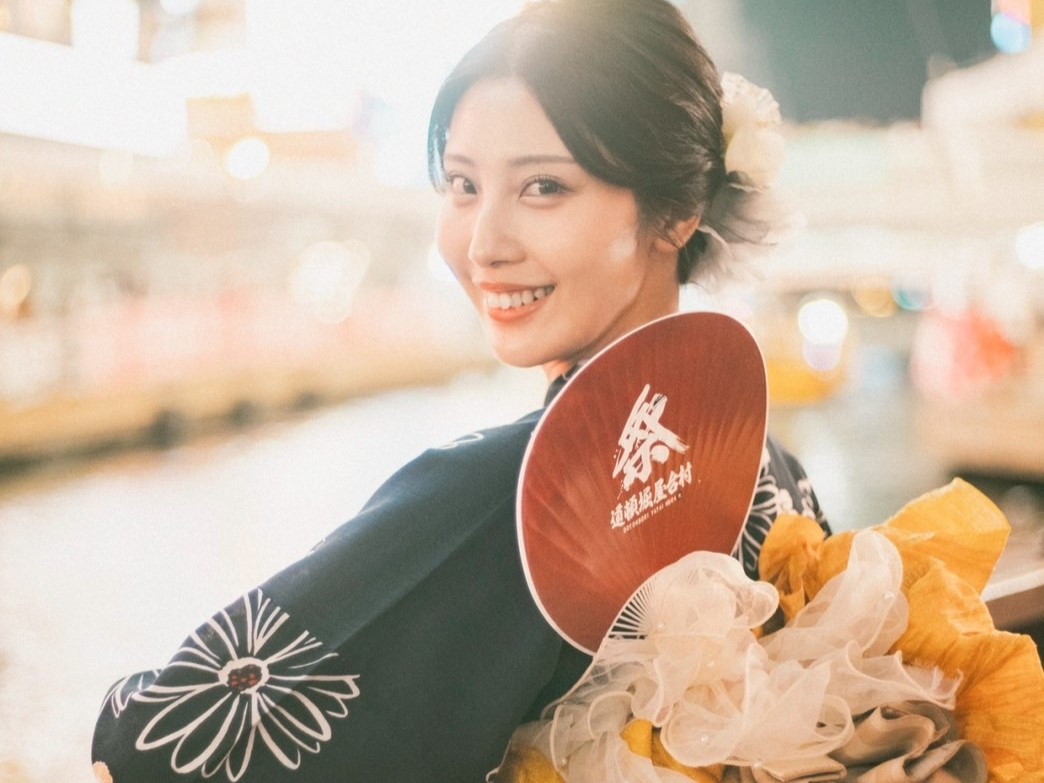
5 Kimono Styles You Didn’t Know You Could Try in Osaka
From Vintage to Lace, Discover the New Wave of Kimono Fashion
When you think of kimono, what comes to mind?
Maybe it’s a classic floral pattern worn during a tea ceremony. Or a bright, elegant furisode at a coming-of-age event. Traditional, beautiful—yes. But maybe also a little… expected?
Here’s the thing: Kimono fashion has evolved. And in Osaka, where tradition meets street style, you’ll find surprising, creative, and modern twists on the classic silhouette.
Whether you’re traveling solo, as a couple, or with friends, Kawaii Osaka offers an incredible variety of styles that go beyond what most tourists imagine. From soft lace to bold colors to vintage vibes, there’s something for every mood—and every Instagram grid.
Let’s explore five kimono styles you probably didn’t know you could try in Osaka.
1. The Lace Kimono: Soft, Dreamy, and Instagram-Ready
What it is:
A modern take on traditional kimono, made with delicate lace overlays or lace fabrics, often in pastel shades like ivory, dusty pink, or pale lavender.
Why it’s special:
The lace kimono is light, feminine, and perfect for café hopping or riverside strolls. It blends traditional shape with romantic, almost bridal textures. These styles often pair beautifully with soft hair buns and floral accessories.
Best for:
Solo travelers who want a soft, dreamy aesthetic
Photoshoots in vintage-style cafés or garden settings
Fans of Korean and Japanese street fashion
Where to wear it:
Try walking through Hozenji Yokocho or visiting a tea salon near Shinsaibashi. These spots match the quiet, elegant mood of lace kimono.
Pro tip:
Go for soft makeup with peach or rose tones. Add a small parasol or lace gloves for a high-fashion finish.
2. The Vintage Kimono: Bold Patterns, Timeless Cool
What it is:
Authentic retro kimono from the Showa or Taisho era, often with bold patterns, earthy colors, and unique textures.
Why it’s special:
Vintage kimono have a story. They’re often one-of-a-kind, with hand-dyed fabrics and unusual motifs. Wearing one feels like stepping into a different time, and the photos always stand out.
Best for:
Travelers who love classic Japanese aesthetics
Those looking for something unique and less “touristy”
Photography enthusiasts or history lovers
Where to wear it:
Wander through Nakazakicho, Osaka’s hidden vintage neighborhood. The old architecture and second-hand shops make a perfect match for vintage looks.
Pro tip:
Pair with retro-style hair (soft curls or a low bun) and classic Japanese accessories like a wooden handbag or embroidered fan.
3. The Pop Color Kimono: Bright, Bold, and Just Fun
What it is:
A high-impact, cheerful kimono style in vibrant colors like neon pink, turquoise, citrus orange, or deep purple—often with oversized floral or geometric prints.
Why it’s special:
This style is playful and full of personality. It’s the kind of outfit that turns heads and makes strangers smile. Perfect for a fun day out with friends or to stand out in the crowd.
Best for:
Group trips or friends who want to coordinate looks
Travelers with a bold personal style
Those who want their photos to pop
Where to wear it:
Take this look to Dotonbori, where the lights and billboards match your outfit’s energy. It's also great for exploring Amerikamura (American Village), Osaka’s center of edgy street style.
Pro tip:
Consider matching your kimono with statement sneakers or bold eye makeup. Yes, it’s unconventional—but in Osaka, fashion rules are made to be broken.
4. The Couple Kimono Look: Perfect Pairings for Two
What it is:
Coordinated kimono sets for couples, usually with matching color palettes or shared motifs. Men’s kimono are often darker or more neutral, while women’s designs echo those tones in a more detailed style.
Why it’s special:
It’s romantic, photogenic, and makes for an unforgettable memory. Whether it’s your honeymoon, anniversary, or just a special date, dressing in kimono together deepens the experience.
Best for:
Couples looking for a unique way to explore the city
Pre-wedding or engagement photos
First-time visitors who want a shared cultural moment
Where to wear it:
Take a slow walk along the Tombori Riverwalk, or visit Osaka Castle Park for romantic garden photos.
Pro tip:
Don’t be shy about holding hands, laughing, or interacting naturally in your photos. The best couple shots feel genuine, not posed.
5. The Hakama or Furisode: Go Big for Special Occasions
What it is:
Hakama is a wide-legged pleated skirt traditionally worn over kimono—often associated with graduation or martial arts. Furisode is a formal kimono with long, flowing sleeves, typically worn by young women on special occasions.
Why it’s special:
These are statement pieces. Whether you’re celebrating something, planning a photoshoot, or just want to go all-in on elegance, this is the look that turns a day into a memory.
Best for:
Birthdays, solo celebrations, or bucket-list travel
Formal photoshoots with professional photographers
Travelers who want to try the most iconic version of kimono fashion
Where to wear it:
Plan a shoot at Osaka Tenmangu Shrine or Sumiyoshi Taisha. These historic spots enhance the dignified feel of formal kimono.
Pro tip:
Ask Kawaii Osaka about studio or on-location photography options to capture the full elegance of your look.
Why Style Variety Matters
The beauty of kimono today lies in its flexibility.
Yes, it’s traditional—but it’s also alive. It changes with the seasons, the city, the person wearing it. And in a vibrant place like Osaka, fashion has room to grow in new directions.
Whether you're into soft pastels or strong contrast, minimal elegance or maximal color, there’s a kimono style for you.
And at Kawaii Osaka, the team is there to help you find it.
Final Thoughts: What Kind of Kimono Person Are You?
You don’t need to know anything about kimono before you arrive.
You just need to know how you want to feel.
Elegant? Playful? Romantic? Unique?
There’s a kimono for that.
So next time you’re in Osaka, skip the one-size-fits-all travel photo. Choose a style that reflects you. Wear it. Walk the streets. See how it changes the way you see the city—and yourself.
Because wearing kimono isn’t about fitting in.
It’s about stepping into your own story—one beautiful, flowing layer at a time.
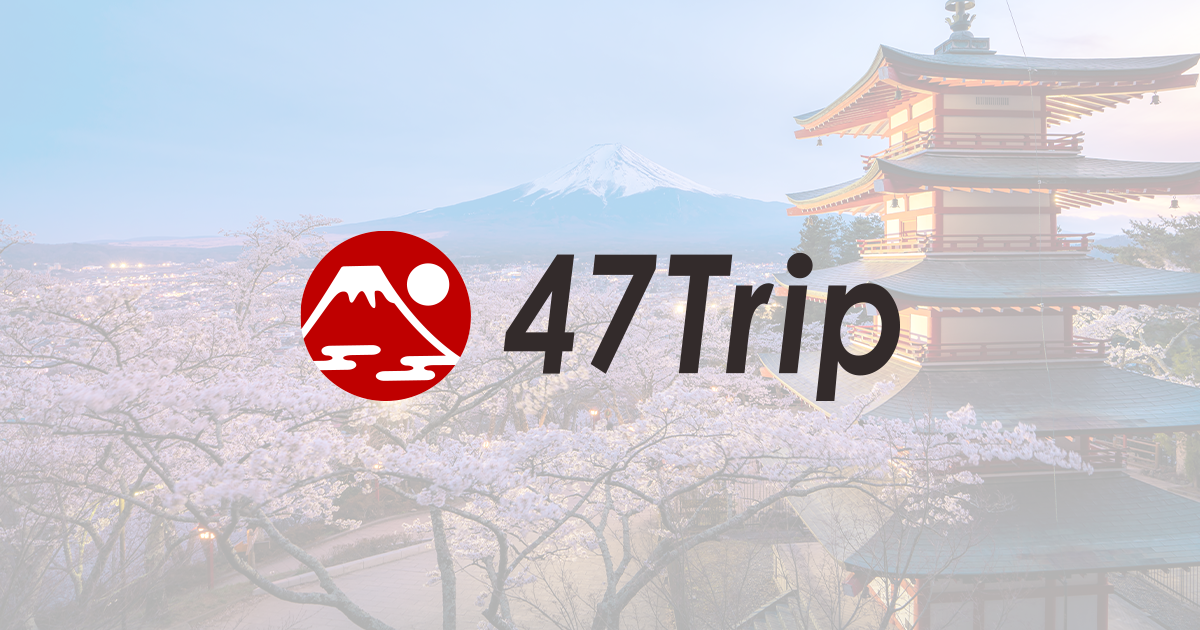
Featured on the Japanese information site '47trip'
This site contains useful information for traveling in Japan! Castles, temples, accommodations, destinations, experiences, activities, shopping, and more! We hope that your trip to Japan will be a happy and unforgettable memory!
47Trip
https://www.47trip.com/
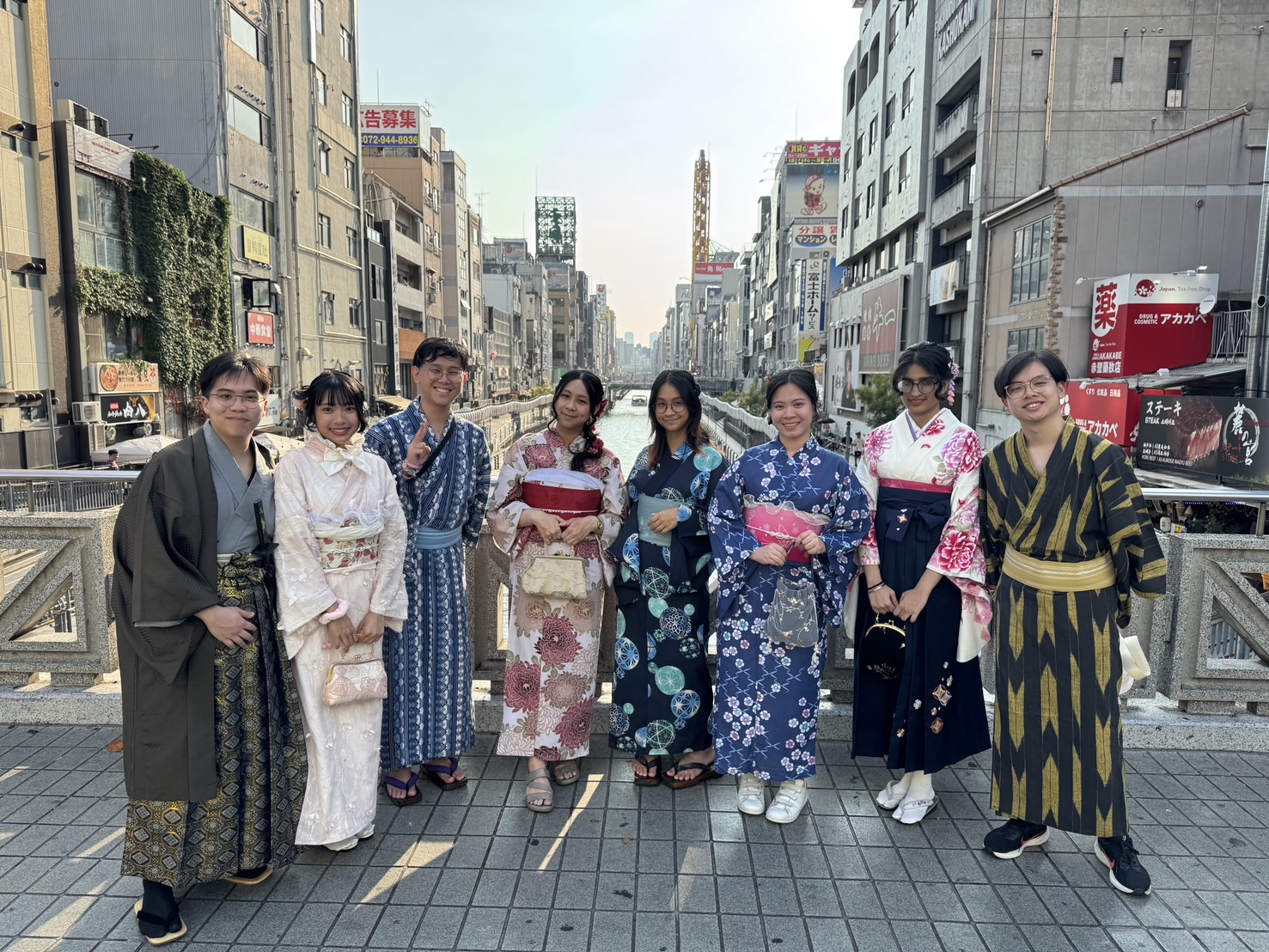
Is It Okay for Foreigners to Wear Kimono?
A Gentle Cultural Guide for First-Time Visitors in Japan
You’ve seen the photos.
Tourists walking through Kyoto or Osaka in elegant kimono, smiling under lanterns, pausing for pictures by temples or along rivers. It looks dreamy. Magical, even.
And yet—you hesitate.
“Is this okay?”
“Am I allowed to wear a kimono if I’m not Japanese?”
“Will people think I’m being disrespectful?”
These are honest, important questions. And the short answer is: Yes, it’s okay. In fact, in many cases, it’s welcomed.
Let’s explore the long answer together—gently, respectfully, and with an open heart.
First of All: Your Intention Matters
Before we go any further, ask yourself:
Are you interested in learning about Japanese culture?
Are you approaching the experience with respect and curiosity?
Are you willing to listen and be mindful during your visit?
If the answer is yes, then you’re already on the right path.
In Japan, intention matters more than perfection. People don’t expect you to know every detail about kimono culture. What they appreciate is your willingness to participate respectfully.
So, Can Foreigners Wear Kimono in Japan?
Absolutely. Especially in cultural cities like Kyoto, Tokyo, and Osaka, kimono rental for tourists—both domestic and international—is not only accepted, it’s part of the modern travel experience.
Shops like Kawaii Osaka were created with this very idea in mind: to make traditional culture accessible and enjoyable for everyone, regardless of background.
Kimono-wearing is no longer reserved only for Japanese nationals. Locals often rent them for special occasions, photo shoots, or fun days out. And seeing travelers dressed in beautiful kimono is a common and celebrated sight in many parts of the country.
What Japanese Locals Really Think
You might be surprised to learn that many Japanese people feel happy and even proud when they see foreigners enjoying their traditional clothing.
Why?
Because it shows interest. Appreciation. A love for something meaningful.
When someone from abroad chooses to wear a kimono—especially through a professional rental shop, with proper styling and guidance—it’s seen as a form of cultural exchange, not appropriation.
In fact, you may hear compliments on the street, like:
“Kawaii ne!” (So cute!)
“Niau!” (It suits you!)
“Where did you rent that? I want to go too.”
This kind of positive reaction happens often, especially in cities like Osaka, where hospitality and friendliness are part of the local identity.
Kimono vs. Cultural Appropriation: Let’s Talk About It
It’s completely valid to wonder where the line is between cultural appreciation and appropriation.
So here’s a helpful way to look at it:
Appreciation = learning about a culture, participating with care, supporting local businesses, and respecting the traditions
Appropriation = mocking, stereotyping, or using cultural items in ways that strip them of meaning
When you rent a kimono from a shop like Kawaii Osaka:
You’re learning how to wear it properly
You’re being styled by professionals who understand the tradition
You’re participating in a modern, local tourism activity
You’re supporting a Japanese-owned business that takes pride in their culture
In this context, your experience is rooted in appreciation, not appropriation.
What Happens When You Wear a Kimono in Japan?
You feel different.
Not because you’re pretending to be someone else—but because the clothing invites a new rhythm. You move more slowly. You carry yourself with a little more grace. You notice how the fabric feels, how people react, how the city looks from this perspective.
That’s the power of cultural clothing—it opens the door to connection.
Wearing a kimono in Osaka isn’t about looking Japanese. It’s about experiencing Japan more deeply.
A Word from the Locals at Kawaii Osaka
At Kawaii Osaka, the team has dressed thousands of travelers from all over the world. From solo visitors and honeymooners to families and friend groups, the reactions are always similar:
“I was nervous at first, but the staff made me feel so comfortable.”
“I didn’t know how beautiful I could feel until I saw myself in the mirror.”
“This was the highlight of my trip.”
The staff are Japanese. Many are bilingual. And all of them love sharing their culture in a way that is open, joyful, and genuine.
Their philosophy is simple:
"Kimono is for everyone who wants to celebrate Japanese beauty with respect."
Things to Keep in Mind
If you want to be respectful while enjoying your kimono experience, here are a few simple tips:
Rent from a professional shop
Don’t buy cheap imitation costumes online. Choose a place like Kawaii Osaka that understands the tradition and dresses you properly.
Follow staff guidance
They’ll show you how to walk, sit, and pose in a way that’s comfortable and respectful.
Be mindful of sacred places
It’s okay to take photos at shrines and temples, but avoid loud behavior or dramatic poses in religious areas.
Learn a little about what you're wearing
Ask about the pattern, the meaning of the colors, or the occasion your kimono style is typically used for. It’s a great way to deepen your appreciation.
Avoid stereotypes
Don’t act “Japanese” or put on a fake accent. Just be yourself—curious, kind, and engaged.
Final Words: You Are Welcome Here
Travel isn’t just about seeing new places. It’s about crossing bridges—cultural, emotional, human.
And wearing a kimono, for many travelers, becomes a turning point. A moment of transformation.
You don’t need to be perfect. You just need to be open.
So if you’re in Osaka and wondering,
“Can I wear a kimono?”
Let us answer with kindness:
Yes, you can. And we’re so glad you want to.
